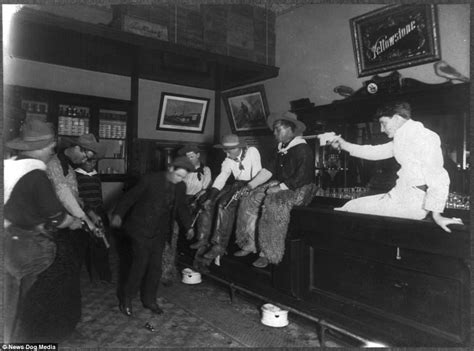
Returning home from vacation? A potentially deadly threat may be waiting: Legionnaires’ disease, often contracted through contaminated water systems. Public health officials are urging travelers to flush their water systems thoroughly upon returning home after a prolonged absence to mitigate the risk of Legionella bacteria growth.
Prolonged vacancy in homes and buildings allows water to stagnate in pipes, creating an environment conducive to the growth of Legionella bacteria, which causes Legionnaires’ disease, a severe form of pneumonia, and Pontiac fever, a milder flu-like illness. According to the Centers for Disease Control and Prevention (CDC), Legionnaires’ disease is a serious concern, with cases on the rise. Experts emphasize the importance of taking preventive measures to safeguard public health.
The Danger of Stagnant Water
When a building’s water system is not used regularly, water sits in the pipes, and disinfectant levels, such as chlorine, can decline, creating conditions ideal for the proliferation of Legionella. These bacteria thrive in warm water, typically between 77°F (25°C) and 113°F (45°C). Water heaters, large plumbing systems, and even decorative fountains can become breeding grounds if not properly maintained.
As Dr. Sandra Kemmerly, system medical director for infection prevention at Ochsner Health in Louisiana, explains, “When water sits unused in pipes for extended periods, it can become stagnant, allowing bacteria like Legionella to grow. Turning on the tap after a vacation without flushing the system can aerosolize these bacteria, posing a risk of inhalation and potential infection.”
Flushing Your System: A Crucial Step
The primary recommendation from health experts is to flush all water outlets thoroughly upon returning home. This involves running all taps, showers, and toilets for several minutes to clear out stagnant water and replenish the system with fresh, treated water.
“The best way to prevent Legionella growth in your home’s water system after a vacation is to flush all the taps for at least five minutes,” advises Dr. Kemmerly. “This simple step can significantly reduce the risk of exposure.”
The duration of flushing depends on the size and complexity of the plumbing system. In larger buildings or homes with extensive pipe networks, it may be necessary to flush for a longer period to ensure complete water turnover.
Who is at Risk?
While anyone can contract Legionnaires’ disease, certain groups are more susceptible to severe illness. These include:
- Individuals over the age of 50
- Smokers (current or former)
- People with chronic lung disease, such as COPD or emphysema
- Those with weakened immune systems due to conditions like cancer, diabetes, or kidney disease
- Individuals taking medications that suppress the immune system, such as corticosteroids or anti-rejection drugs
For these high-risk groups, taking extra precautions is especially critical. Symptoms of Legionnaires’ disease can include cough, fever, shortness of breath, muscle aches, and headache. If these symptoms develop within two weeks of returning from vacation, prompt medical attention is essential.
Beyond Flushing: Additional Preventive Measures
In addition to flushing water systems, several other measures can help prevent Legionella growth:
- Maintain water heater temperature: Keep water heaters set to at least 140°F (60°C) to inhibit bacterial growth. However, be cautious to prevent scalding, especially in households with young children or elderly individuals. Consider installing mixing valves to regulate water temperature at the tap.
- Clean showerheads and faucets: Periodically clean showerheads and faucet aerators to remove any biofilm or sediment that can harbor bacteria.
- Drain and flush hot water tanks: Regularly drain and flush hot water tanks to remove sediment and debris that can provide a breeding ground for Legionella.
- Maintain cooling towers: For larger buildings with cooling towers, ensure proper maintenance and disinfection protocols are followed to prevent Legionella contamination. Cooling towers are often implicated in outbreaks of Legionnaires’ disease.
- Consult professionals: If you have concerns about your water system or suspect Legionella contamination, consult with a qualified plumber or water treatment specialist.
Legionnaires’ Disease: A Closer Look
Legionnaires’ disease is a type of pneumonia caused by Legionella bacteria. The bacteria are commonly found in freshwater environments, such as lakes and streams. However, they can also colonize man-made water systems, including:
- Plumbing systems in buildings
- Hot water tanks
- Cooling towers (air conditioning systems)
- Hot tubs and spas
- Decorative fountains
People contract Legionnaires’ disease by inhaling microscopic water droplets containing the bacteria. This can occur when contaminated water is aerosolized through showers, faucets, or air conditioning systems. The disease is not spread from person to person.
Symptoms and Diagnosis
Symptoms of Legionnaires’ disease typically appear within 2 to 14 days after exposure to the bacteria. Common symptoms include:
- Cough (may be dry or produce mucus)
- Fever (often high, reaching 104°F or higher)
- Shortness of breath
- Muscle aches
- Headache
- Fatigue
- Chest pain
- Gastrointestinal symptoms (nausea, vomiting, diarrhea)
Diagnosis of Legionnaires’ disease typically involves a urine test to detect Legionella antigens or a sputum (phlegm) culture to identify the bacteria. A chest X-ray may also be performed to assess the extent of lung involvement.
Treatment and Prognosis
Legionnaires’ disease is treated with antibiotics. Early diagnosis and treatment are crucial to prevent serious complications. Most people with Legionnaires’ disease require hospitalization.
The prognosis for Legionnaires’ disease depends on the severity of the infection and the individual’s overall health. With prompt and appropriate treatment, most people recover fully. However, the disease can be fatal, particularly in individuals with weakened immune systems or underlying health conditions. The CDC estimates that about 1 in 10 people who get Legionnaires’ disease will die.
The Rise of Legionnaires’ Disease
According to the CDC, cases of Legionnaires’ disease have been increasing in recent years. This trend is attributed to several factors, including:
- Aging infrastructure: Deteriorating water systems can provide more opportunities for Legionella growth.
- Climate change: Warmer temperatures can promote bacterial growth in water systems.
- Increased awareness and testing: Improved diagnostic methods may be leading to more cases being identified.
In 2018, nearly 10,000 cases of Legionnaires’ disease were reported in the United States. The actual number of cases is likely higher, as many infections may go undiagnosed or unreported.
Public Health Recommendations
Public health agencies are actively working to prevent Legionnaires’ disease through education, surveillance, and regulation. The CDC provides guidelines for building owners and managers on how to maintain water systems to minimize the risk of Legionella growth. These guidelines include:
- Developing a water management program that identifies and addresses potential sources of Legionella contamination.
- Regularly testing water for Legionella bacteria.
- Implementing disinfection protocols to kill or control Legionella growth.
- Training staff on water management procedures.
State and local health departments also play a crucial role in preventing Legionnaires’ disease by investigating outbreaks, providing guidance to building owners, and enforcing regulations.
Protecting Yourself and Your Family
While Legionnaires’ disease can be a serious threat, taking preventive measures can significantly reduce the risk of infection. In addition to flushing water systems after a vacation, consider the following tips:
- Use caution when using hot tubs or spas. Ensure that they are properly maintained and disinfected.
- Avoid exposure to aerosolized water from sources that may be contaminated, such as decorative fountains or cooling towers.
- If you are at high risk for Legionnaires’ disease, discuss your concerns with your doctor and consider additional precautions.
By staying informed and taking proactive steps, you can protect yourself and your family from the dangers of Legionnaires’ disease.
Long-Term Solutions and Building Design
Preventing Legionella growth isn’t just about immediate actions after vacation; long-term solutions and considerations in building design play a crucial role. Architects and engineers are increasingly incorporating strategies to minimize the risk of Legionella in new constructions. These include:
- Optimized Plumbing Design: Designing plumbing systems with minimal dead legs (sections of pipe where water can stagnate) and using materials less prone to biofilm formation can reduce Legionella’s potential habitats.
- Temperature Management Systems: Implementing advanced temperature control systems that maintain hot water at consistently high temperatures (above 140°F) and cold water below 68°F throughout the building can prevent Legionella proliferation. However, anti-scald measures are crucial.
- Water Treatment Technologies: Installing point-of-entry or point-of-use water treatment systems, such as UV disinfection or copper-silver ionization, can provide continuous disinfection and prevent Legionella colonization.
- Regular Maintenance Programs: Establishing comprehensive water management plans that include regular inspections, cleaning, and disinfection of water systems is essential for long-term prevention.
- Smart Building Technology: Integrating smart building technology allows for real-time monitoring of water temperature, flow rates, and disinfectant levels, enabling proactive intervention to prevent Legionella growth.
Global Perspectives on Legionnaires’ Disease
Legionnaires’ disease is a global concern, with cases reported in numerous countries. Different countries have adopted varying approaches to prevention and control, reflecting differences in infrastructure, climate, and public health priorities.
In Europe, the European Centre for Disease Prevention and Control (ECDC) coordinates surveillance and provides guidance to member states on Legionnaires’ disease prevention. Many European countries have implemented national guidelines for water system management and Legionella control.
Australia has also experienced significant outbreaks of Legionnaires’ disease and has implemented stringent regulations for cooling tower maintenance and disinfection.
Understanding the global perspective on Legionnaires’ disease can help inform best practices and strategies for prevention and control.
The Role of Research and Innovation
Ongoing research is crucial for improving our understanding of Legionella bacteria and developing more effective prevention and treatment strategies. Current research efforts are focused on:
- Developing more rapid and accurate diagnostic tests: Faster diagnostic tests can enable earlier detection and treatment of Legionnaires’ disease.
- Identifying new targets for antibiotic therapy: Research is underway to identify new drugs that can effectively kill Legionella bacteria and overcome antibiotic resistance.
- Understanding the genetic diversity of Legionella: Studying the genetic makeup of Legionella strains can help track outbreaks and identify factors that contribute to virulence.
- Evaluating the effectiveness of different disinfection methods: Research is needed to determine the most effective ways to disinfect water systems and prevent Legionella growth.
Innovation in water treatment technologies, such as advanced filtration and disinfection methods, is also playing a key role in preventing Legionnaires’ disease.
The Impact of Climate Change
Climate change is expected to exacerbate the risk of Legionnaires’ disease in several ways. Warmer temperatures can promote Legionella growth in water systems, while more frequent and intense heat waves can increase demand for cooling, leading to greater use of cooling towers. Changes in rainfall patterns can also affect water quality and availability, potentially increasing the risk of Legionella contamination.
Public health officials need to consider the potential impacts of climate change when developing strategies for Legionnaires’ disease prevention and control. This may involve adapting water management practices, improving infrastructure resilience, and implementing climate-smart building designs.
Community Awareness and Education
Raising community awareness about Legionnaires’ disease and its prevention is essential for protecting public health. Public health campaigns can educate people about the risks of Legionella exposure, the importance of flushing water systems, and other preventive measures. These campaigns should target high-risk groups, such as older adults and people with weakened immune systems.
Community-based interventions, such as workshops and training programs, can also empower people to take proactive steps to protect themselves and their families.
FAQ: Legionnaires’ Disease and Vacation Home Safety
1. What is Legionnaires’ disease, and how do you get it?
Legionnaires’ disease is a severe form of pneumonia caused by Legionella bacteria. “People get Legionnaires’ disease by inhaling microscopic water droplets containing the bacteria,” explains the CDC. These droplets can come from various sources like showers, faucets, hot tubs, and air conditioning systems. The disease is not spread from person to person.
2. Why is flushing water systems important after returning from vacation?
When a building is unoccupied, water sits stagnant in the pipes, allowing bacteria like Legionella to grow. Dr. Kemmerly states, “When water sits unused in pipes for extended periods, it can become stagnant, allowing bacteria like Legionella to grow.” Flushing the system for several minutes clears out the stagnant water and replenishes it with fresh, treated water, reducing the risk of bacterial exposure.
3. How long should I flush my water system after returning from vacation?
Health experts recommend flushing all taps, showers, and toilets for at least five minutes. “The best way to prevent Legionella growth in your home’s water system after a vacation is to flush all the taps for at least five minutes,” advises Dr. Kemmerly. For larger buildings or homes with extensive pipe networks, a longer flushing period may be necessary.
4. Who is most at risk of contracting Legionnaires’ disease?
While anyone can contract Legionnaires’ disease, certain groups are more susceptible to severe illness. These include individuals over 50, smokers, people with chronic lung disease, and those with weakened immune systems due to conditions like cancer, diabetes, or kidney disease. These high-risk groups should take extra precautions to minimize their risk of exposure.
5. What are the symptoms of Legionnaires’ disease, and when should I seek medical attention?
Symptoms of Legionnaires’ disease typically appear within 2 to 14 days after exposure to the bacteria and can include cough, fever, shortness of breath, muscle aches, and headache. If you develop these symptoms within two weeks of returning from vacation, it’s essential to seek prompt medical attention, as early diagnosis and treatment are crucial for preventing serious complications. “If these symptoms develop within two weeks of returning from vacation, prompt medical attention is essential,” as the article points out.
Detailed Expansion on Specific Aspects
Water Heater Temperature and Scalding Prevention:
While maintaining a water heater temperature of at least 140°F (60°C) is effective in inhibiting Legionella growth, it also poses a significant risk of scalding, particularly for vulnerable populations such as young children and elderly individuals. Scalding can occur within seconds at these temperatures, leading to severe burns and potential hospitalization.
To mitigate this risk, consider installing thermostatic mixing valves (TMVs) at the point of use. TMVs blend hot and cold water to deliver a consistent and safe temperature at the tap, typically around 120°F (49°C). This allows you to maintain a high water heater temperature for Legionella control while preventing scalding at the point of use.
Regularly check and maintain TMVs to ensure they are functioning properly. Mineral buildup and corrosion can affect their performance, potentially leading to inconsistent water temperatures.
Cooling Tower Management and Disinfection:
Cooling towers are a common source of Legionella outbreaks, as they provide an ideal environment for bacterial growth and aerosolization. Proper maintenance and disinfection of cooling towers are essential for preventing Legionnaires’ disease.
Key steps in cooling tower management include:
- Regular Inspections: Conduct regular inspections of cooling towers to identify potential problems, such as biofilm buildup, corrosion, and leaks.
- Cleaning and Disinfection: Clean and disinfect cooling towers on a regular basis, following industry best practices. This typically involves using biocides to kill Legionella bacteria and removing sediment and debris.
- Water Treatment: Implement a comprehensive water treatment program that includes corrosion inhibitors, scale inhibitors, and biocides to maintain water quality and prevent Legionella growth.
- Drift Eliminators: Ensure that drift eliminators are properly installed and maintained to minimize the release of water droplets into the air.
- Monitoring: Regularly monitor water quality and Legionella levels in cooling towers to ensure that disinfection protocols are effective.
Water Management Programs for Buildings:
A comprehensive water management program is essential for preventing Legionella growth in buildings. The CDC recommends that building owners and managers develop and implement a water management program that includes the following elements:
- Team Assembly: Establish a team of qualified individuals to oversee the water management program. This team should include representatives from engineering, maintenance, infection prevention, and environmental health and safety.
- Building Water System Description: Create a detailed description of the building’s water system, including all potential sources of Legionella contamination.
- Control Measures: Identify and implement control measures to minimize the risk of Legionella growth. These measures may include temperature control, disinfection, filtration, and regular cleaning.
- Monitoring and Testing: Regularly monitor water quality and Legionella levels to ensure that control measures are effective.
- Documentation: Maintain accurate records of all water management activities, including inspections, cleaning, disinfection, and testing.
- Verification: Regularly verify that the water management program is effective in preventing Legionella growth.
Legal and Regulatory Aspects:
In many jurisdictions, building owners and managers are legally obligated to implement water management programs and take steps to prevent Legionella growth. Failure to comply with these regulations can result in fines, lawsuits, and even criminal charges.
It is essential to stay informed about the legal and regulatory requirements in your area and to ensure that your water management program meets all applicable standards.
The Future of Legionella Prevention:
Ongoing research and innovation are driving advances in Legionella prevention. Emerging technologies, such as real-time water quality monitoring systems and advanced disinfection methods, hold promise for further reducing the risk of Legionnaires’ disease.
Collaboration between researchers, public health officials, building owners, and water treatment professionals is essential for developing and implementing effective strategies for preventing Legionnaires’ disease and protecting public health.









